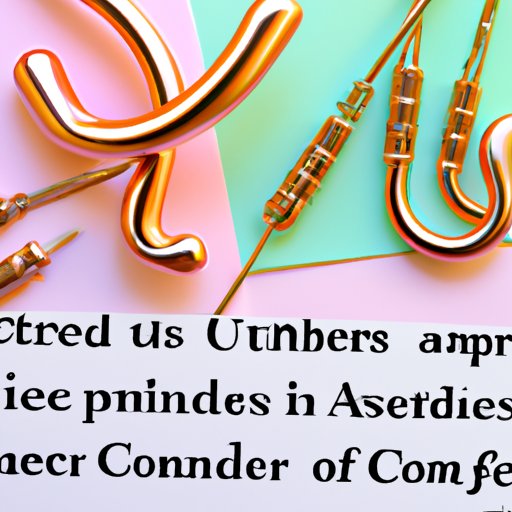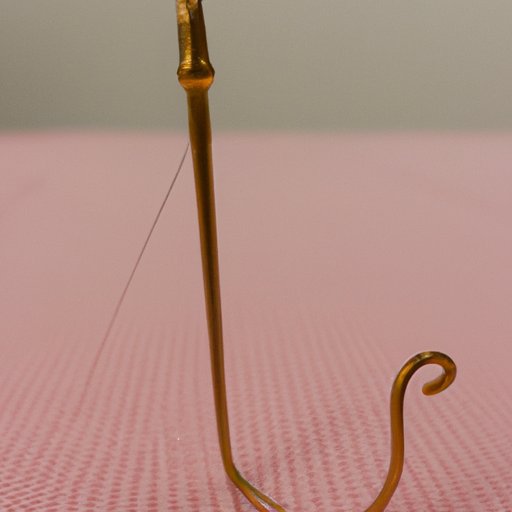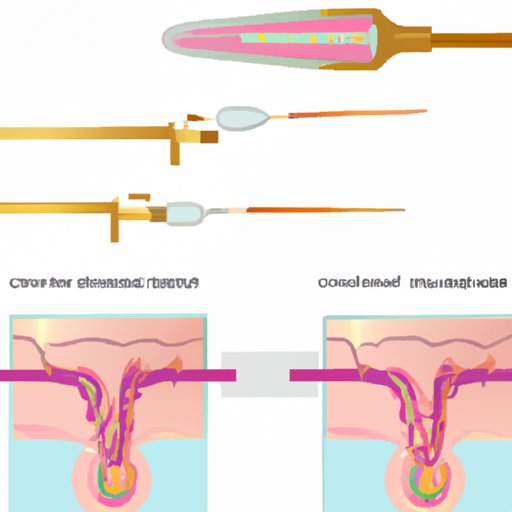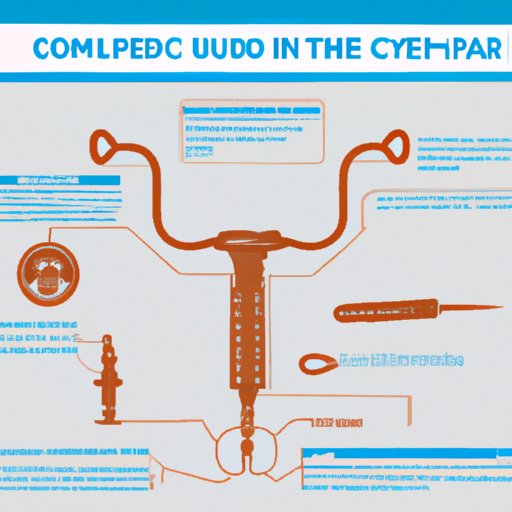Introduction
A copper intrauterine device (IUD) is a small, T-shaped device made from plastic and copper that is inserted into the uterus to prevent pregnancy. The device works by releasing small amounts of copper into the uterus, which acts as a natural contraceptive. This form of birth control has been used for many years and is becoming increasingly popular due to its effectiveness and convenience.

Overview of the Benefits and Risks of Copper IUDs
The use of copper IUDs has many advantages, including its high efficacy rate of greater than 99%, its long-term protection against unwanted pregnancies, and its low cost compared to other forms of contraception. Additionally, copper IUDs do not contain any hormones and can be easily removed if desired.
However, there are some potential risks associated with the use of copper IUDs. These include cramping and spotting during the first few months after insertion, as well as an increased risk of pelvic inflammatory disease. Additionally, copper IUDs may increase the risk of ectopic pregnancy. Therefore, it is important to discuss the pros and cons of copper IUDs with your healthcare provider before deciding on a form of contraception.

Exploring the Science Behind Copper IUDs
Now that we have explored the benefits and risks of copper IUDs, let’s take a closer look at how they work. Copper IUDs are a form of non-hormonal contraception, meaning they do not contain any hormones such as estrogen or progestin. Instead, copper IUDs rely on the copper wire wound around the device to prevent pregnancy.

The Mechanisms of Action for Copper IUDs
According to research conducted by the World Health Organization, copper IUDs work in three main ways: by preventing sperm from reaching the egg, by inhibiting implantation of a fertilized egg, and by causing changes in the endometrial lining that make it inhospitable to a fertilized egg.
Firstly, the presence of copper ions in the uterus creates an environment that is toxic to sperm. The copper ions act as a physical barrier, preventing sperm from reaching the egg and fertilizing it. Secondly, the copper ions also cause changes in the endometrium, making it less hospitable to a fertilized egg. Finally, the copper ions can also interfere with the implantation of a fertilized egg.
“The copper IUD is one of the most effective forms of contraception available, with a failure rate of less than 1 percent,” says Dr. Mary Jane Minkin, clinical professor of obstetrics, gynecology, and reproductive sciences at Yale University School of Medicine. “It’s highly effective and easy to use.”
A Guide to Understanding How Copper IUDs Work
It is important to understand the basics of how copper IUDs work before considering them as a form of contraception. Here is a quick guide to understanding the use and maintenance of copper IUDs:
- Insertion: A healthcare provider will insert the copper IUD into the uterus. This process usually takes about 10 minutes and can be done in the office.
- Maintenance: Copper IUDs should be checked every 6-12 months to ensure that it is still in place.
- Removal: The device can be removed at any time with the help of a healthcare provider.
Examining the Pros and Cons of Copper IUDs
When deciding whether or not to use a copper IUD, it is important to weigh the pros and cons of this type of contraception. On the plus side, copper IUDs are highly effective, long lasting, and convenient. They do not contain any hormones and can be removed at any time. Additionally, they are relatively inexpensive compared to other forms of contraception.
On the downside, copper IUDs can cause cramping and spotting during the first few months after insertion. Additionally, they may increase the risk of pelvic inflammatory disease and ectopic pregnancy. Therefore, it is important to speak with your healthcare provider to determine if a copper IUD is right for you.
Conclusion
In conclusion, copper IUDs are an effective and convenient form of contraception that can provide long-term protection against unwanted pregnancies. They work by releasing copper ions into the uterus, which create a toxic environment for sperm and inhibit implantation of a fertilized egg. While copper IUDs come with some potential risks, they are generally safe and can be easily removed if desired.
It is important to discuss the pros and cons of copper IUDs with your healthcare provider before deciding on a form of contraception. With the proper information and guidance, copper IUDs can be a safe and effective way to prevent unwanted pregnancies.
(Note: Is this article not meeting your expectations? Do you have knowledge or insights to share? Unlock new opportunities and expand your reach by joining our authors team. Click Registration to join us and share your expertise with our readers.)
